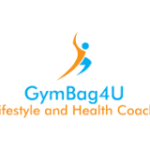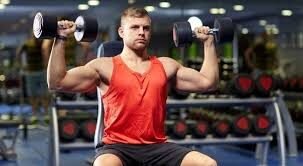The shoulders are a complex joint that is made up of three bones: the humerus, the scapula, and the clavicle. The shoulders are responsible for a wide range of movements, including overhead lifting, reaching, and pushing. and shoulder workouts are very beneficial to strengthen the shoulder.
Strong, sculpted shoulders are not only visually impressive but also essential for overall upper body strength and functionality. Whether you’re aiming to build muscle mass, improve shoulder stability, or enhance athletic performance, incorporating targeted shoulder workouts into your fitness routine is crucial. In this comprehensive guide, we’ll explore the benefits of shoulder workouts, top exercises for sculpting strong shoulders, and expert strategies for maximizing your shoulder gains.
Understanding Shoulder Anatomy:
Before diving into shoulder workouts, it’s essential to understand the anatomy of the shoulders. The shoulders comprise several key muscles, including the deltoids, which consist of three heads: the anterior deltoid (front), medial deltoid (side), and posterior deltoid (rear). These muscles are responsible for various movements of the shoulder joint, including abduction, adduction, flexion, extension, and rotation.
Strong shoulders are important for overall fitness and can help to prevent injuries. Shoulder workouts can help to build strength, improve range of motion, and prevent injuries.
Process of shoulder workouts:
There are many different shoulder workouts that can be done, both with and without weights. Some common shoulder exercises include:
- Overhead Press: The overhead press targets the entire shoulder complex, including the anterior, medial, and posterior deltoids, as well as the triceps and upper chest. Perform with a barbell, dumbbells, or a shoulder press machine. This exercise is a great way to build strength in the front of the shoulders. To do an overhead press, stand with your feet shoulder-width apart and hold a weight in each hand. Press the weights overhead until your arms are fully extended, then slowly lower them back to the starting position.
- Lateral Raises: Lateral raises target the medial deltoids, helping to create width and definition in the shoulders. Use dumbbells or cables and lift the weights out to the sides until they reach shoulder height. This exercise is a great way to build strength in the side of the shoulders. To do a lateral raise, stand with your feet shoulder-width apart and hold a weight in each hand. Raise the weights out to the sides until they are parallel to the floor, then slowly lower them back to the starting position.
- Front Raises: Front raises target the anterior deltoids, helping to develop the front of the shoulders. Use dumbbells or a barbell and lift the weights straight out in front of you to shoulder height. This exercise is a great way to build strength in the front of the shoulders. To do a front raise, stand with your feet shoulder-width apart and hold a weight in each hand. Raise the weights straight up in front of you until they are shoulder-height, then slowly lower them back to the starting position.
- Rear Deltoid Flyes: Rear deltoid flyes target the posterior deltoids, helping to develop the back of the shoulders. Use dumbbells or cables and bend forward at the hips while keeping a slight bend in the elbows, then lift the weights out to the sides. This exercise is a great way to build strength in the back of the shoulders. To do a rear delt fly, sit on a bench with your feet flat on the floor and hold a weight in each hand. Bend your elbows and bring the weights back behind you until they are parallel to the floor, then slowly return to the starting position.
- Arnold Press: The Arnold press is a variation of the overhead press that targets all three heads of the deltoids as well as the rotator cuff muscles. Perform by rotating the palms inward as you press the weights overhead, then rotating them outward as you lower the weights.
- Upright Rows: Upright rows target the lateral deltoids, traps, and upper back muscles. Use a barbell or dumbbells and lift the weights straight up towards your chin while keeping your elbows higher than your wrists.
- Face Pulls: Face pulls target the rear deltoids, traps, and rotator cuff muscles while also improving posture. Use a cable machine with a rope attachment and pull the rope towards your face, keeping your elbows high and shoulders back. This exercise is a great way to strengthen the muscles that connect the shoulder to the upper back. To do a face pull, attach a rope attachment to a cable machine and stand with your feet shoulder-width apart. Grasp the ends of the rope with your hands and pull the rope towards your face until it touches your forehead, then slowly release it back to the starting position.
- Shrugs: Shrugs primarily target the traps, but they also engage the shoulders and upper back muscles. Use dumbbells or a barbell and lift the weights straight up towards your ears, focusing on lifting with the shoulders rather than the arms.
- Push Press: The push press is a dynamic compound exercise that targets the shoulders, triceps, and legs. Perform by using leg drive to help press a barbell or dumbbells overhead.
- High Pulls: High pulls target the shoulders, traps, and upper back muscles while also improving explosive power. Use a barbell or dumbbells and pull the weights up towards your chin while keeping your elbows high and shoulders back.
Benefits of shoulder workouts
Shoulder workouts offer a number of benefits, including:
- Increased Shoulder Strength: Targeted shoulder workouts help strengthen the muscles of the shoulders, improving overall upper body strength and stability.
- Enhanced Shoulder Definition: Shoulder exercises help sculpt and define the deltoid muscles, creating a more aesthetically pleasing and balanced physique.
- Improved Shoulder Stability: Strengthening the muscles surrounding the shoulder joint improves stability and reduces the risk of injury during everyday activities and athletic endeavors.
- Enhanced Athletic Performance: Strong shoulders are essential for athletic movements such as throwing, swinging, and lifting, improving performance in sports and activities that require upper body strength and power.
- Injury Prevention: Shoulder workouts help strengthen the rotator cuff muscles and stabilizers, reducing the risk of common shoulder injuries such as rotator cuff tears, impingement, and instability.
- Functional Fitness: Strong shoulders are essential for performing everyday tasks such as lifting, carrying, pushing, and pulling, improving overall functional fitness and quality of life.
- Improved Posture: Targeted shoulder exercises help strengthen the muscles of the upper back and improve posture by supporting proper spinal alignment and shoulder positioning.
- Builds strength in the shoulders. Strong shoulders are important for overall fitness and can help to prevent injuries.
- Improves range of motion. Shoulder workouts can help to improve the range of motion in the shoulders, which can help with activities such as reaching and overhead lifting.
- Increases confidence. Having strong and defined shoulders can boost your confidence and make you feel better about yourself.
Strategies for Maximizing Shoulder Gains:
- Proper Warm-Up: Begin your shoulder workouts with a dynamic warm-up to increase blood flow to the muscles, improve joint mobility, and activate the neuromuscular system. Perform shoulder circles, arm swings, and light shoulder stretches.
- Mind-Muscle Connection: Focus on contracting the muscles of the shoulders throughout each exercise to maximize muscle activation and engagement. Visualize the muscles working and concentrate on maintaining tension throughout the movement.
- Progressive Overload: Continuously challenge your shoulders by gradually increasing the weight, reps, or intensity of your exercises over time. Aim for progressive overload to stimulate muscle growth and strength gains.
- Variety and Variation: Incorporate a variety of shoulder exercises, rep ranges, and training modalities into your workouts to prevent boredom and plateauing. Mix up your routine with different exercises, equipment, and training techniques to keep your muscles guessing and promote continual progress.
- Full Range of Motion: Perform shoulder exercises through a full range of motion to maximize muscle activation and stimulate growth. Focus on achieving a full stretch and contraction in each repetition while maintaining proper form and control.
- Rest and Recovery: Allow adequate time for rest and recovery between shoulder workouts to facilitate muscle repair and growth. Avoid overtraining by listening to your body and giving yourself permission to rest when needed.
- Nutrition and Hydration: Fuel your body with proper nutrition and hydration to support muscle growth, recovery, and overall performance. Consume a balanced diet rich in protein, carbohydrates, healthy fats, vitamins, and minerals, and stay hydrated before, during, and after your workouts.
- Foam Rolling and Stretching: Incorporate foam rolling and static stretching into your post-workout routine to alleviate muscle soreness, improve flexibility, and promote recovery. Target tight muscles and trigger points with a foam roller and hold static stretches for 20-30 seconds to enhance flexibility and range of motion.
Precautions during shoulder workouts
There are a few precautions to take when doing shoulder workouts, including:
- Use a weight that is challenging but not too heavy. If you use too much weight, you could injure yourself.
- Focus on form. Make sure that you are using proper form to avoid injuries.
- Listen to your body. If you feel pain, stop the exercise and rest.
- Warm up before you start working out. Warming up will help to prevent injuries.
- Cool down after you finish working out. Cooling down will help to prevent muscle soreness.
Equipment used for shoulder workout:
The equipment that you need for shoulder workouts will vary depending on the exercises that you are doing. Some common pieces of equipment used for shoulder workouts include:
- Weights: Weights are used to provide resistance for shoulder exercises.
- Cable machine: A cable machine can be used for a variety of shoulder exercises, such as face pulls and rear delt flies.
- Bands: Bands can be used for a variety of shoulder exercises, such as lateral raises and front raises.
- Machines: There are a number of machines that can be used for shoulder workouts, such as the shoulder press machine and the lateral raise machine.
Conclusion:
Shoulder workouts are a great way to build strength, improve range of motion, and prevent injuries. By following the precautions outlined above, you can help to ensure that you have a safe and enjoyable shoulder workout.
Incorporating targeted shoulder workouts into your fitness routine is essential for building strength, stability, and definition in the shoulders while enhancing overall upper body aesthetics and functionality. By incorporating a diverse array of exercises, employing effective training strategies, and prioritizing proper warm-up, form, and recovery, you can maximize your shoulder gains and achieve the strong, sculpted shoulders you desire. Whether you’re a beginner or an experienced lifter, focusing on shoulder development is key to achieving a well-rounded physique and unlocking your full upper body potential.
Thanks for visiting Gymbag4u.com
You may also love reading our following articles Fitness Care in 2023: The Latest Gadgets and Equipment’s – GymBag4U and Which gym equipment helps to make stomach flat? – GymBag4U and How to lose weight after 50? – GymBag4U and Horizon 7.0 AE Elliptical Review – Best Gym cycle – GymBag4U

